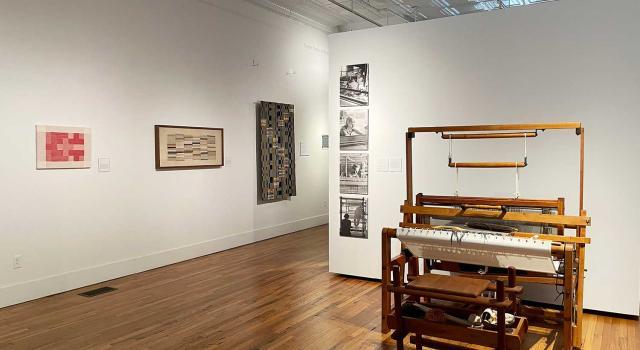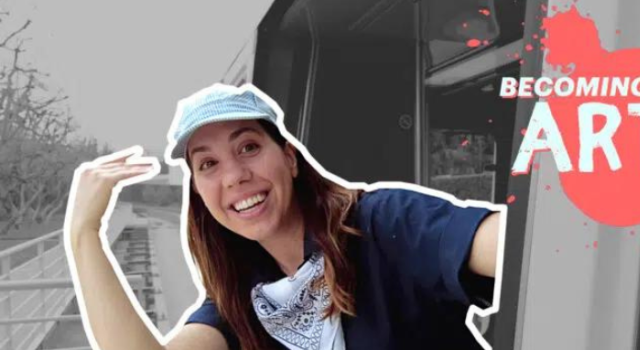Art History
Hampshire students concentrating in this field learn not only how to analyze works of art as objects or monuments in their own right, but also to understand and interpret them in relation to the historical circumstances, endeavors, and conflicts of the culture and region in which they were made.
Students read and interpret visual art works as records of a culture's imagination and its larger societal concerns, while developing diverse critical methods and originality of thought.
Art history is an exciting area of inquiry, by its very nature strongly interdisciplinary, and at Hampshire students have created concentrations that relate art history to curatorial studies, sociology, memory, spirituality, literature, and architecture.
Student Project Titles
- The Triumph of Earthly Love in the Work of Caravaggio
- The Art Market: Record Sales in the Canon
- The Peasant in Nazi and Soviet Visual Culture
- The Marked Body: Queer Representation in Contemporary Art and the NEA
- The Medical Gaze, Encrypted Space, and the Organized Body: Urban Transformation in Buenos Aires
- Immured Contradiction: Radical Modernism, Critical Traditionalism at Charles Rennie Mackintosh's Hill House, Helensburgh
- Perspectives in Artistic Climates and Literary Evolution
- Reversal Tactics: Deconstructing Popular Cultures
Sample First-Year Course
The Body in Modern Art
The representation of the human body is central to the history of art. This course will explore this crucial subject as it has been portrayed over the past two centuries. The course begins with readings on anatomy and the shift from Jacques-Louis David's virile masculinity in the 1780s to a more androgynous and even feminized male as rendered by his followers. It then will explore the spectacle of a modern city in which prostitutes/Venus/ femme fatales/other kinds of working women often were favored over the domestic sphere. After examining art from the period of World War I where various assaults on traditional mimesis took place among avant-garde artists, this course will explore contemporary investigations of bodily representation, from the body sculpting projects of Orlan to identity politics and the ways that bodily representation have been developed.
Sample Courses at Hampshire
- Aesthetic Theory
- Art and Exile
- The Body in Modern Art
- Books, Book Arts, Artists' Book, Bibliophilia
- The Bauhaus
- The Collector: Theory and Practice
- Colonialism in the Visual Arts
- Dada and Surrealist Visions
- Degas, Van Gogh, Gauguin
- Europe After the Rain: Reconstructing Modernity
- Guernica
- Introduction to Visual Culture
- Modernism and Modernity
- Realism in Nineteenth-Century Art
- Symbolists and Decadents
- The Residue, the Detail, the Intimate
- Visual Culture and the Holocaust
Through the Consortium
- African Art and Diaspora (AC)
- Art and Death (SC)
- Dreaming of Italy (SC)
- Evaluating Greek Art (UMass)
- Gods and Mortals (MHC)
- Great Themes in Art (UMass)
- Impressionism and Post-Impressionism (UMass)
Facilities and Resources
Museums and Galleries
The Five College Consortium houses a number of museums open to Hampshire students and faculty. These, as well as a partnership with nearby Historic Deerfield, give students access to art and material culture from a wide range of geographic and historical contexts.
The National Yiddish Book Center, housed on Hampshire College's campus, contains more than a million volumes of Yiddish literature and is host to hosts of public programs ranging from concerts to readings, films and exhibits.
The Mead Art Museum at Amherst College houses more than 14,000 works of art in its permanent collection, along with its changing exhibition space, the Fairchild Gallery, and a newly renovated Teaching Gallery.
The Smith College Museum of Art is best known for its collection of nineteenth and twentieth century paintings and sculpture, and also houses the state-of-the-art Cunningham Center for the Study of Prints, Drawings, and Photographs.
The permanent collection of the Mount Holyoke College Art Museum, one of the oldest teaching museums in the country, includes Asian Art, Egyptian, Greek, and Roman antiquities, medieval sculpture, early Italian Renaissance paintings, and other treasures.
The University Gallery at the University of Massachusetts Amherst maintains a massive permanent collection emphasizing works from the latter half of the twentieth century.
All of these spectacular collections are open to use by Hampshire students of art history, and frequently utilized by Hampshire classes.
The Eric Carle Museum of Picture Book Art is located on the Hampshire College campus, and is the foremost force in a new movement to celebrate the previously under-recognized artistic field of children's book illustration.



